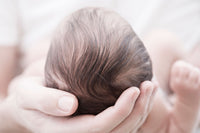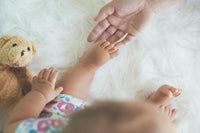By Kathryn Peck / Medically reviewed by Dr. Samantha Ball, DO
There’s really no amount of baby guides, birthing classes, and friendly advice that can wholly and altogether prepare new parents for what things will be like when their baby arrives. It’s an experience unlike any other that’ll totally change your world—in a good way. You will realize strengths you didn’t know you had and worries you didn’t know existed.
You will realize strengths you didn’t know you had and worries you didn’t know existed.
In the meantime, here are 8 newborn things that are ordinarily completely normal and shouldn’t be added to your list of worries.
- Cradle cap. You might notice some crusty flakes or oily patches of skin on your baby’s scalp. This is most likely cradle cap, also but less commonly called seborrheic dermatitis, which is a harmless and common skin condition among little ones. In fact, records indicate that 70 percent of infants are affected with cradle cap by the time they’re 12 weeks old. If there’s any question about redness, itchiness or severity, certainly ask your pediatrician, but in most cases you can let it run its course or take a stab at any of the at-home treatment options from our blog post, “Cradle Cap: What it is & What to do,” in the meantime.
- Bow legs. It’s actually quite common for a newborn baby’s legs to be bowed out and their feet to be turned in. If you think about the somewhat cramped environment they’ve been in for the past few months, it’s not really a surprise. Between 6 and 18 months, your baby’s legs and feet will likely straighten out, particularly after your baby begins standing, creeping, and walking.
- Ingrown nails. This is a bit misleading, because newborns’ toes frequently overlap and the nails only look ingrown, but they really aren't. Baby nails are so soft and malleable, and they may curve in at the edges, so unless the toe is red and swollen, they’re actually just fine.
-
Thick, blackish-greenish poop. This totally normal tar-like substance is called meconium. (It's a mixture of amniotic fluid, bile, and secretions from the intestinal glands.) Shocking, yes, but in a few days, your baby’s poop will change to the yellowish-brownish color while they are breast fed and/or formula fed. And even then, stools can vary in frequency from several a day to once a week.
Don’t be afraid to ask your pediatrician about your baby’s poop. Now that you’re a parent, it’ll be a heavily discussed topic for years to come, trust me.
-
Baby acne. According to the American Academy of Dermatology, about 20% of newborns have a type of acne called neonatal acne or neonatal cephalic pustulosis. It usually shows up at about 2 weeks of age and is nothing to worry about. In the majority of cases, it is mild and can be treated by cleansing daily with soap and water and avoiding exogenous oils (e.g. baby essential oils, calming oils, etc.) and lotions. It’ll likely subside on its own in the coming weeks without any scarring.
Did you know? Affected newborns do not have a greater risk of acne in their teenage years.
- Dirty diapers … and lots of them. They say newborn babies go through an average of 10 diapers per day. That’s a lot of diapers! This won’t always be the case, but for new parents, much of your day will be spent standing at the changing table I’m afraid.
- Crying. Babies cry, it’s just a given, and some cry more than others. And as a parent, it’s one of the hardest things to handle because of our maternal and innate sense to calm and console your crying baby. Newborns cry for any number of reason: hunger, sleep, dirty diapers, stimulation, etc. While each baby is different, experts say crying increases at 2 to 3 weeks of age and peaks by 6 to 8 weeks of age, and it peaks in the afternoons and evenings.
- Sneezing. Gesundheit! It’s funny, but it’s common for newborns to sneeze a lot, which shouldn’t be mistaken for an oncoming cold or allergies. In fact, infants are too young for environmental allergies. Rather, babies are reacting normally to environmental situations and just clearing their little nasal passages to keep air moving through; it’s a defense mechanism to clear out the nose.
-
Please note: This is for educational and informational purposes only and is not meant to substitute individual medical advice. For specific and individual advice, always talk to your doctor.
About the author: Kathryn is the owner of Bicycle Pie and mom of 4 little ones. Also a writer, editor, and former owner of one of Boston's premiere baby boutiques, she continues to write about motherhood, children's products, family life, and all other things that test our skills and patience as parents.
About the reviewer: Dr. Samantha Ball, DO, is a pediatrician, cat mom, and advocate for children’s overall health and wellness. She is continually focused on supporting families through all stages in a realistic and evidence-based way. In addition to practicing medicine in Georgia, she shares experiences and her perspectives on topics including parenting tips, mental and physical health, and how to navigate the unexpected challenges that come about when raising kids.
Photo credit: iStock.com/StefaNikolic




